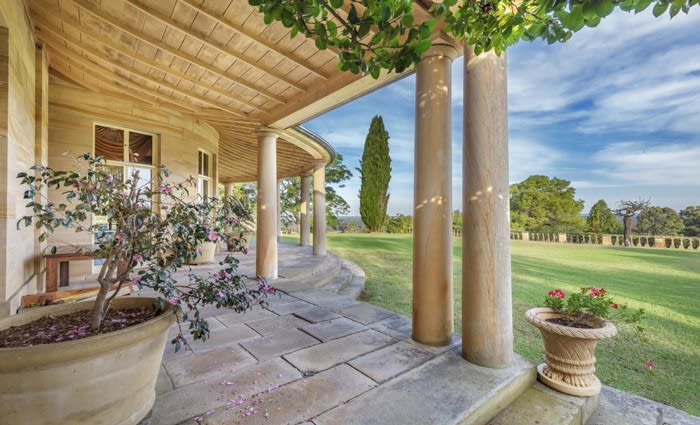Fernhill at Mulgoa boomerangs back onto market
The trophy estate, Fernhill at Mulgoa has returned to the market.
Set on 383 hectares at the foot of the Blue Mountains, its stunning seven bedroom sandstone residence was completed in the 1840s for the Cox pioneering family.
Fernhill’s heritage-listed Greek Revival temple style homestead is set high on the hill with sweeping valley views from its classic colonnaded porch. Inside features a 16-seater dining room and sprung ballroom.
Marketing on the $30 million plus estate commenced on the weekend through Ken Jacobs at Christie's International.
The debenture firm Angas Securities has moved to offload the property after its complex put and call sale option to South African businessman Simon Tripp and his wife Brenda eventually fell through.
Angus took on the holding in 2011 after property developer Warren Anderson vacated the property, located around an hour’s drive west of the Sydney CBD.
Anderson, who housed stuffed animals in the ballroom, was forced to depart after a long court battle with receivers following the break-up of his 42-year marriage.
It was furnished with Regency antiques, paintings and French Empire clocks, on the back of Anderson's 20 years success in consolidating development sites for Coles New World.
The Adelaide-based boutique financier, are still seeking permissions to develop 100-lot plus housing on its outer perimeter of the entire 654-hectare property.
Picnic race meetings were held during the brief occupancy of the entreprenurial Simon Tripp and his wife Brenda to provide income for the costly estate.
Fernhill has a great thoroughbred history, as one of the greatest racehorses that ever trod the Australian turf, Yattendon died at Fernhill in 1880.
Winner of the Sydney Cup in 1866, Yattendon produced Melbourne Cup winners Chester (1877) and Grand Flaneur (1880).
The stables are the oldest buildings on site having housed the Irish stonemasons who worked on the sandstone residence designed by the colonial architect Mortimer Lewis.
Fernhill was built by William Cox, an engineer who oversaw the road that passed over the Blue Mountains, for his son Edward.
It remained in the ownership of the Cox family until 1896, when it sold to the Wright family, of Wright, Heaton and Co, who billed their firm as the most extensive carrying firm in the colony.
Anderson bought it from John Darling IV in 1980 for $2.8 million. Darling paid 22,500 pounds in 1955.
